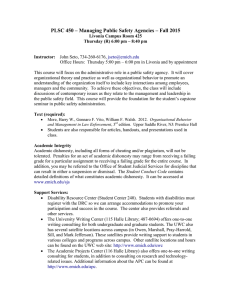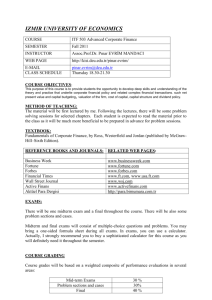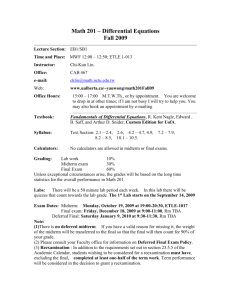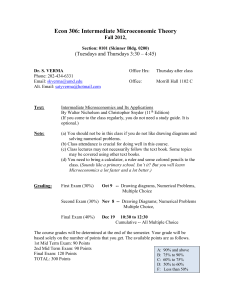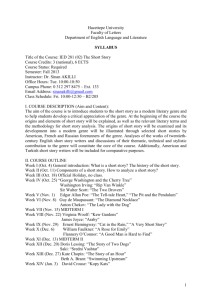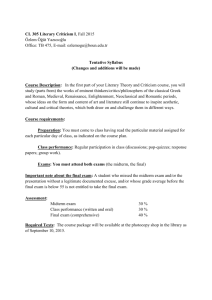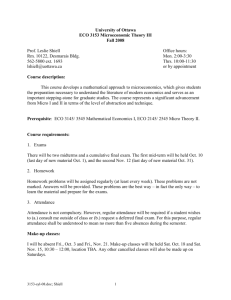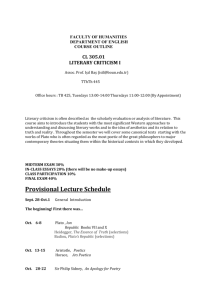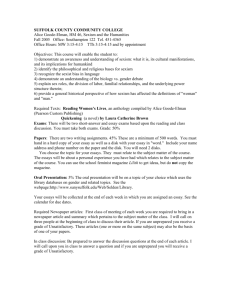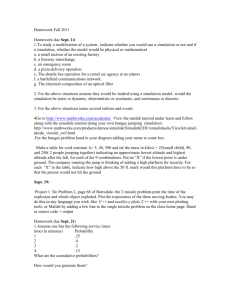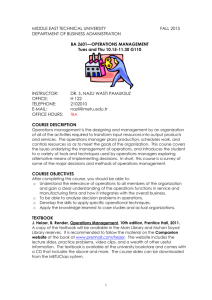COURSE CODE : BIL108E, CRN: 13509 COURSE TITLE
advertisement
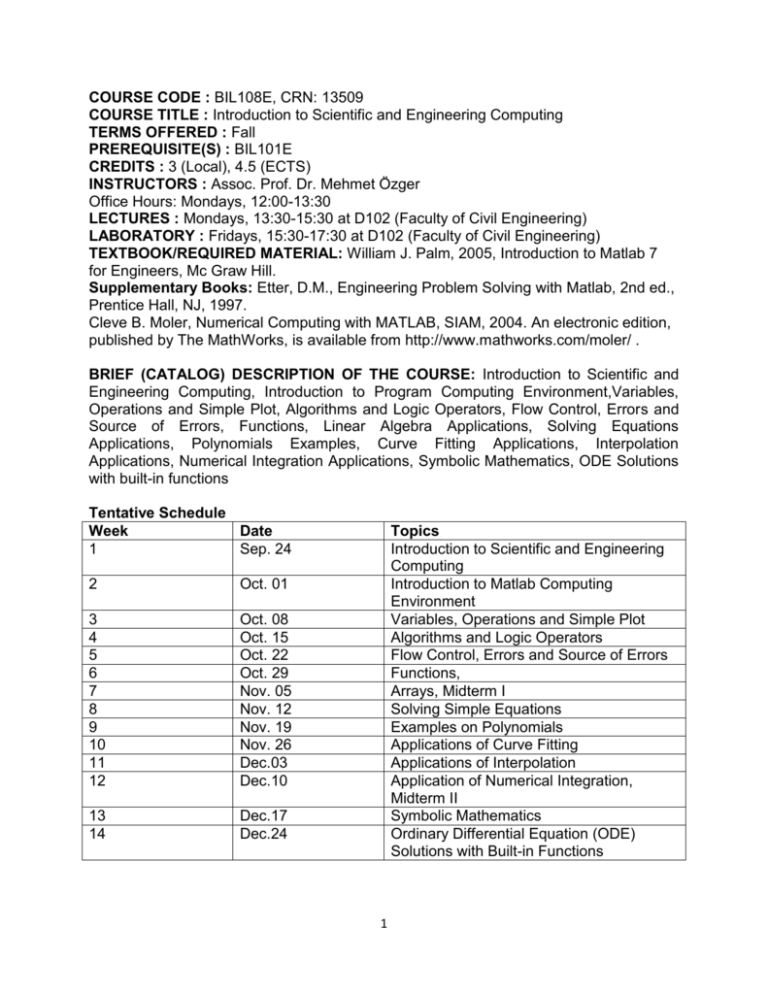
COURSE CODE : BIL108E, CRN: 13509 COURSE TITLE : Introduction to Scientific and Engineering Computing TERMS OFFERED : Fall PREREQUISITE(S) : BIL101E CREDITS : 3 (Local), 4.5 (ECTS) INSTRUCTORS : Assoc. Prof. Dr. Mehmet Özger Office Hours: Mondays, 12:00-13:30 LECTURES : Mondays, 13:30-15:30 at D102 (Faculty of Civil Engineering) LABORATORY : Fridays, 15:30-17:30 at D102 (Faculty of Civil Engineering) TEXTBOOK/REQUIRED MATERIAL: William J. Palm, 2005, Introduction to Matlab 7 for Engineers, Mc Graw Hill. Supplementary Books: Etter, D.M., Engineering Problem Solving with Matlab, 2nd ed., Prentice Hall, NJ, 1997. Cleve B. Moler, Numerical Computing with MATLAB, SIAM, 2004. An electronic edition, published by The MathWorks, is available from http://www.mathworks.com/moler/ . BRIEF (CATALOG) DESCRIPTION OF THE COURSE: Introduction to Scientific and Engineering Computing, Introduction to Program Computing Environment,Variables, Operations and Simple Plot, Algorithms and Logic Operators, Flow Control, Errors and Source of Errors, Functions, Linear Algebra Applications, Solving Equations Applications, Polynomials Examples, Curve Fitting Applications, Interpolation Applications, Numerical Integration Applications, Symbolic Mathematics, ODE Solutions with built-in functions Tentative Schedule Week Date 1 Sep. 24 2 Oct. 01 3 4 5 6 7 8 9 10 11 12 Oct. 08 Oct. 15 Oct. 22 Oct. 29 Nov. 05 Nov. 12 Nov. 19 Nov. 26 Dec.03 Dec.10 13 14 Dec.17 Dec.24 Topics Introduction to Scientific and Engineering Computing Introduction to Matlab Computing Environment Variables, Operations and Simple Plot Algorithms and Logic Operators Flow Control, Errors and Source of Errors Functions, Arrays, Midterm I Solving Simple Equations Examples on Polynomials Applications of Curve Fitting Applications of Interpolation Application of Numerical Integration, Midterm II Symbolic Mathematics Ordinary Differential Equation (ODE) Solutions with Built-in Functions 1 COURSE OBJECTIVES: 1. To familiarize students with the fundamentals of scientific computing concepts. 2. To develop problem solving skills. 3. To develop skills in constructing an algorithm. 4. To train students how to use problem solver program in scientific and engineering calculations. 5. To train students to visualize their results and prepare written reports. TOOLS USED TO ACHIEVE THE OBJECTIVES: Lecturing, laboratory sessions, homework and final exam. All the activities will be carried out in the computer labs. Homework: Four homework assignments, that should be submitted in a report format, will be handed out. Laboratory Sessions: Laboratory sessions will be based on the material covered in the lectures. If one did not attend the lecture, they will most likely not be able to contribute an effort to solve the assigned problems, therefore only the ones who attend the lecture will be admitted to the laboratory. Exams: All exams will be conducted in computer labs unless otherwise stated. Only your ITU accounts and course web page will be available in exams. GRADING: Homework (4 assignments) 20% Midterm (2 exams, 20% each) 40% Final Exam 40% COURSE OUTCOMES: Student, succeeded at the course satisfactorily can: 1. Learn the knowledge on contemporary issues of engineering problems and relate them with the problem solvers 2. Learn the syntax 3. Analyze a problem and develop an algorithm 4. Test, debug, and verify the program 5. Understand and do both pre- and post-processing of raw data (input) and produced data (output) for scientific and engineering problems 6. Solve simple numerical problems by using built-in and script functions 7. Prepare scientific report 2
